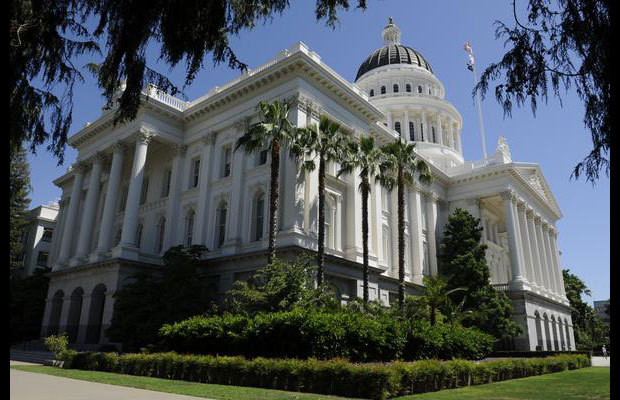Proposed state budget keeps Gov. Brown, UC’s Napolitano on collision course

Dennis McCoy | Sacramento Business Journal
Kathy Robertson
Senior Staff Writer- Sacramento Business Journal
Gov.Jerry Brown’s proposed $133.3 billion state budget puts billions into education and health care, pays down debt and keeps a stash of money in a rainy day fund.
It boosts funding for Medi-Cal to cove a higher caseload as the program continues to grow and adds $120 million in new funding for both the University of California and California State University systems — but only if the programs keep tuition flat.
But the governor’s budget plan may be only the latest salvo in the ongoing financial feud between Brown and UC President Janet Napolitano. The UC Board of Regents in November approved a plan to hike tuition as much as 5 percent a year over the next five years if state legislators don’t unlock hundreds of millions dollars more in funding.
In a statement Friday, Napolitano called Brown’s proposal “only the first step” toward a final state budget.
“While we are disappointed the governor did not include sufficient revenue to expand enrollment of California students and reinvest in academic quality at the university, we are hopeful that continued discussions with the governor and the Legislature will yield a budget that maintains the access, affordability and excellence for which the University of California is renowned,” Napolitano said .
The 10-campus UC system receives $460 million less in state funding than it did in 2007, Napolitano said. Under UC’s tuition increase plan, average undergraduate costs could rise from $12,192 today to $15,564 in fall 2019.
Brown’s budget includes $1.2 billion to expand workforce training, $1.1 billion for flood protection, puts $532 million toward the state water plan, and channels $1 billion in cap-and-trade expenditures to boost funding for high-speed rail and efforts to combat climate change, according to documents released Friday morning.
The spending plan also puts $2.5 billion in state money toward restoring cuts to the In Home Supportive Services Program and increases state funding to trial courts by $90 billion, but expects a looming $72 billion tab for retiree health care costs to be hashed out at the bargaining table with unions as contracts come up for renegotiation.
“This budget is carefully balanced, builds for the future, pays down debt and puts California in a very solid position going forward,” Brown said in a Friday morning news conference. “It is more precarious than I’d like and will get more challenging to us as we get down the road.”
That comment suggests Brown will keep a tight grip on state purse strings. The proposed budget uses $1.2 billion from Proposition 2 to pay down debt, but leaves $2.8 billion from the rainy day fund approved by voters in November intact by year end.
“We are going to keep Proposition 2 for the next recession,” Brown said in response to a question about using it to reduce the state’s retiree health care liability. “We’re keeping it as a hedge when the next downturn comes.”
Instead, the budget calls for the state and its employees to share equally in pre-funding retiree health benefits, with details to be negotiated with organized labor.
“If the governor wants to set aside some money up front, that’s a good thing,” said Bruce Blanning, executive director for the Professional Engineers in California Government. “If he wants to shift the payment burden to employees, that’s a bit a problem.”
The place to resolve the issue is at the bargaining table, Blanning said, but look for a fight.
“If a program fully funded by the employer shifts to the paychecks of the people who provide public service to the state, that’s unacceptable,” Blanning said.
Read a PDF of the state budget summary.
[Source]: Silicon Valley Business Journal


